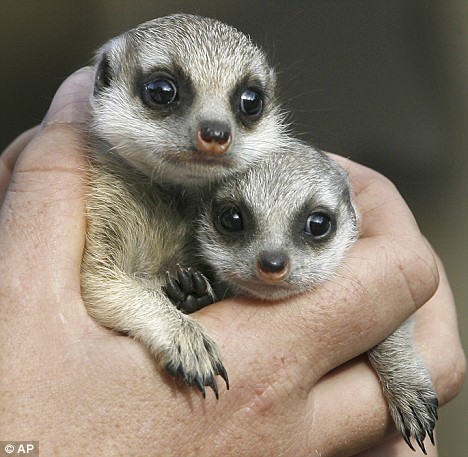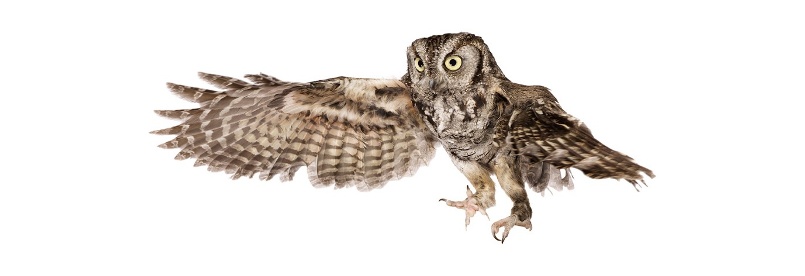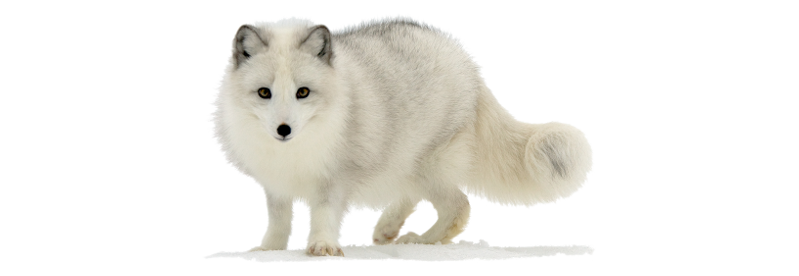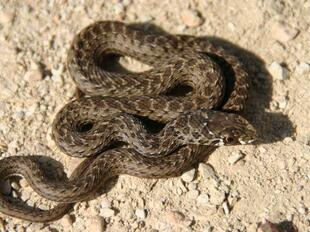
Meerkat, or Suricate(Suricata suricata)
Phylum —chordata
Class — mammalia
Order — carnivora
Family —herpestidae
Genus—suricata
Appearance
The Meerkat is a small mongoose of slim build characterized by a broad head, large eyes, a pointed snout, long legs, a thin tapering tail and a brindled coat pattern. The head-and-body length is around 24–35 cm (9.4–13.8 in), and the weight has been recorded to be between 0.62–0.97 kg (1.4–2.1 lb) without much variation between the sexes (though some dominant females can be heavier than the rest). The soft coat is light grey to yellowish brown with alternate, poorly defined light and dark bands on the back. Individuals from the southern part of the range tend to be darker. The guard hairs, light at the base, have two dark rings and are tipped with black or silvery white; several such hairs aligned together give rise to the coat pattern. Its head is mostly white and the underparts are covered sparsely with dark reddish brown fur, with the dark skin underneath showing through. The eyes, in sockets covering over 20% of the skull length, are capable of binocular vision. The slim, yellowish tail, unlike the bushy tails of many other mongooses, measures 17 to 25 cm (6.7 to 9.8 in), and is tipped with black.
The Meerkat well adapted for digging, movement through tunnels and standing erect, though it is not as capable of running and climbing. The big, sharp and curved foreclaws (slightly longer than the hindclaws) are highly specialised among the feliforms, and enable the Meerkat to dig efficiently. The black, crescent-like ears can be closed to prevent the entry of dirt and debris while digging. The tail is used to balance when standing upright. Digitigrade, the Meerkat has four digits on each foot with thick pads underneath.
The Meerkat has a specialized thermoregulation system that helps it survive in its harsh desert habitat. A study showed that its body temperature follows a diurnal rhythm, averaging 38.3 °C (100.9 °F) during the day and 36.3 °C (97.3 °F) at night. As the body temperature falls below the thermoneutral zone, determined to be 30–32.5 °C (86.0–90.5 °F), the heart rate and oxygen consumption plummet; perspiration increases sharply at temperatures above this range. Additionally, it has a basal metabolic rate remarkably lower than other carnivores, which helps in conserving water, surviving on lower amounts of food and decreasing heat output from metabolic processes. During winter, it balances heat loss by increasing the metabolic heat generation and other methods such as sunbathing.
Habitat
The Meerkat has a wide distribution in southern Africa, from the extreme southwest of Angola, through Namibia and Botswana, and into west and north South Africa.
Behavior
The Meerkat is like only three other mongoose species, in that it is highly sociable and inhabits territories in groups. A group usually has 10 to 30 individuals (although much larger ones are not uncommon where the food supply is plentiful) consisting of three or four family units with a male and female and their young. Once they come out of their burrows in the early morning sun to sunbathe, most of them will go off to seek food while the others act as guards or babysit the young. By standing on their hind legs up on mounds and in bushes, the guards are able to have a good view of approaching predators, particularly those in the sky. They will use different alarm calls to alert the group to the danger, and often the whole group will dive into the burrow to hide.
Diet
Meerkats are mainly insectivorous, eating insects such as scorpions (they are immune to the venom), beetles, spiders, crickets, centipedes, millipedes and worms. They also eat eggs, roots, tubers, small reptiles and small mammals.
Reproduction
Meerkats exhibit a monogamous mating system, meaning that the dominant male and female of each group are usually the only individuals to successfully breed. However, subordinate females very occasionally will reproduce, and subordinate males will temporarily leave the group to try to mate with females of other groups, which suggests polygynous behavior. The breeding season in the wild runs from October to April, whereas in captivity they breed year round. Gestation lasts for 11 weeks, with 2 to 5 pups being born. The pups stay in their burrow for three weeks, ‘babysat’ by helpers. When they are four weeks old, they will begin to go with the group to forage, and for their first 49 to 63 days will be fed by the helpers, at the same time being taught how to get their own food. This species becomes sexually mature at about 1 year of age.
In captivity, Meerkats have been known to live for over 12 years. Lifespan in the wild may be from 5 to 15 years.
In captivity
There are actually (at least) three different ways to care for any type of pet.
- Method 1: Free-range—"no cage"—such as with dogs and cats.
- Method 2: Partially caged—where they get play periods outside of the cage—such as what is done with most small animals like ferrets and birds.
- Method 3: Fully caged, which is done with animals that are either too dangerous or unsuitable for humans to interact with outside of the cage. This is what zoos do with most of their animals, and the enclosures must be large and stimulating enough to provide for an animal’s wellbeing for their entire lives.
Meerkats can only be kept with either method one or three, and are probably best suited for the latter.
Meerkats are mostly carnivorous/insectivorous, however, some plant material can be offered for variety and nutrition. With most insectivorous diets, variety is key, and more than one insect should be offered.Some other meats can also be offered, including frozen-thawed rodents (mice and rats), chicks, and perhaps raw pieces of chicken and other human-grade meats (beef, venison, bison, rabbit, duck). Vegetable matter may include sweet potatoes, squash, and carrots—and most "dog-safe" fruits and veggies are also acceptable.
What are some potential ramifications of Meerkat ownership regarding their welfare? Most people consider an animal to be a "pet" when it is kept in the same fashion as dogs and cats, i.e. being a "companion" to humans and having most or all of its time free in the home.
Meerkats kept in this fashion—raised by humans since an early age—will see their caretakers as group members and exclude anyone else as a predator.
This is important to consider, because this means that the animals will depend on you for their imperative socialization needs. Any disruption to this dynamic will result in emotional distress, which is a common issue with many exotic mammals when it comes to re-homing them. More importantly, a Meerkat can be accustomed to human care and may not be able to reintegrate with other Meerkats.
 Russian
Russian
 English
English
























